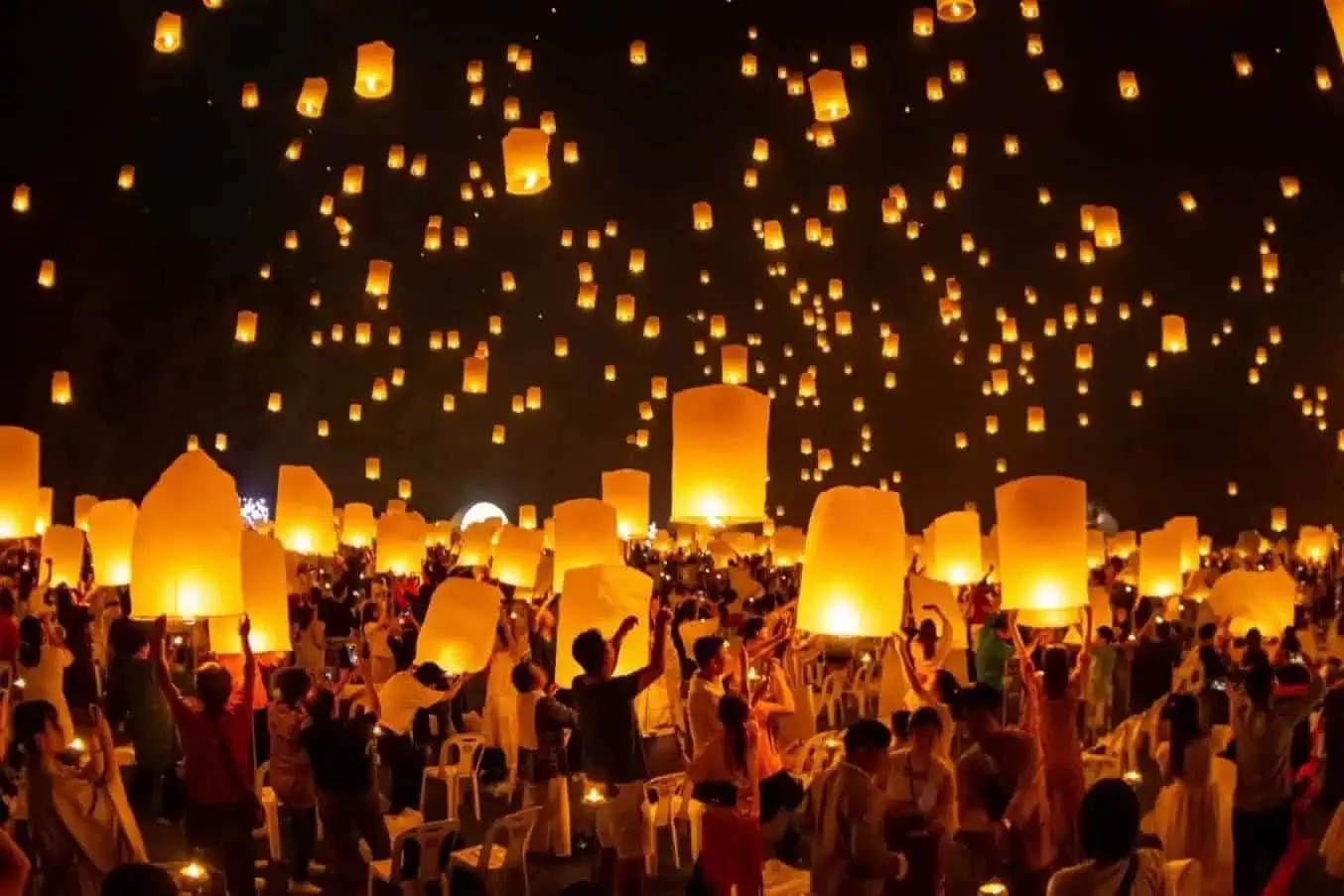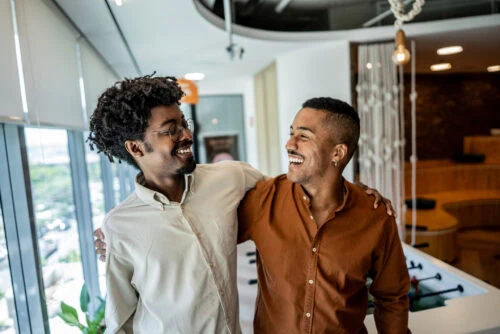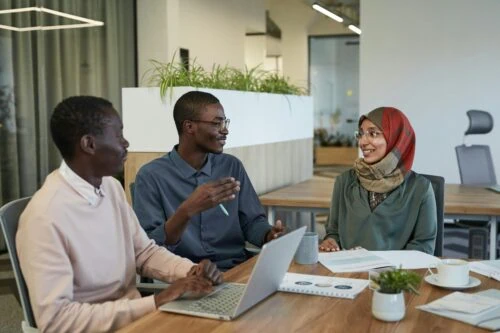Welcome to a world where your background is your most vital asset, your culture enhances your professional journey, and diversity isn’t just accepted—it’s celebrated. As you stand on the threshold of your career, embarking on the path to find not just a job but a place where you truly belong, remember: the uniqueness you bring to the table is invaluable.
In today’s interconnected world, companies seek individuals who can bring diverse perspectives, skills, and ideas to their teams. They understand that a diverse workforce is a moral imperative and a competitive advantage. This guide is crafted especially for you, the entry-level job seeker who is not only looking to start their career but is also passionate about finding a workplace that respects and celebrates diversity. A place where every day is an opportunity to learn from others’ experiences, cultures, and viewpoints.
As you navigate this guide, we aim to provide you with the tools, knowledge, and confidence to find those opportunities that align with your values. We will explore various aspects of job searching, workplace culture, and how to thrive in an environment that values what you uniquely bring.
This is more than a guide; it’s your first step toward a meaningful career path in an inclusive and diverse professional landscape. Let’s embark on this journey together, unlocking doors to opportunities where your individuality is not just seen but sought after.
The Magic of February: Global Cultural Festivals in February
February is more than just a month for love. It’s a time when the world bursts into a colorful array of cultural celebrations. From the lively beats of Brazil to the serene glow of lantern-lit streets in China, global cultural festivals in February always have something unique to offer. These festivals bring people together, celebrating heritage and the joy of life. So, let’s explore the magic that turns this chilly month into a global stage of vibrancy and warmth.
Why Celebrate in February?
Many wonder why February, often cold and gray, is a month of such worldwide festivities. The answer is simple. It’s a bridge between seasons, a time signaling the end of winter’s chill and the approach of spring’s renewal. This transition period invites traditions that mark new beginnings, family unity, and communal joy. Here are a couple of reasons why February stands out:
- A Time for Unity: Amidst the celebrations, there’s a shared sense of belonging and togetherness. These festivals highlight the importance of community and shared experiences. As we dive into how cultures celebrate worldwide, we grasp the essence of unity in diversity.
- Marking the New: Many cultures use February’s festivals to turn over a new leaf. It’s about fresh starts, whether the year ahead, new seasons, or renewing spirits. These transitions are central to human experience, reminding us of the cycle of life and our part in it.
Moreover, engaging in or learning about these festivities can enrich our understanding of the world. It introduces us to new perspectives, fostering a more inclusive attitude. For those curious about the various ways cultures around the world celebrate their uniqueness, navigating the diversity of cultural expressions can be enlightening.
February’s global cultural festivities are a testament to humanity’s rich heritage and our shared joys and hopes. They’re an open invitation to celebrate together, no matter where we are.
The Heartbeat of Brazil: Carnival Celebrations
When February rolls around, Brazil transforms. The Carnival, a worldwide festival, starts with an explosion of music, dance, and colors. This event isn’t just a party; it’s a display of cultural pride, unity, and creative expression. The streets of Rio de Janeiro, in particular, become a canvas painted with the vibrant costumes and smiles of both locals and visitors from across the globe.
What Makes Carnival Iconic?
The Carnival’s heart lies in its samba schools. These groups, rooted deeply in Brazilian communities, compete in the Sambadrome, presenting a spectacle of dance, elaborate floats, and captivating music. But what truly sets the Carnival apart is:
- Inclusivity: Anyone can join the celebration. It breaks down barriers, inviting everyone to dance, sing, and celebrate. It’s a powerful reminder of the joy shared experiences can bring and aligns closely with the values of unity and inclusivity.
- Artistry: The intricate costumes and floats are months in the making, representing not just artistic talent but also stories, dreams, and historical events. This craftsmanship highlights a deep respect for tradition and the creative spirit of the Brazilian people.
The Carnival doesn’t just stay within the borders of Brazil. It’s celebrated in various forms worldwide, showcasing the impact of Brazilian culture globally. For those looking outside of Brazil, cities like New Orleans and Venice also host their unique takes on Carnival, proving the universal appeal of coming together in celebration. Learn more about these global celebrations here.
Ultimately, the Carnival in Brazil is more than a festival; it’s a lively, pulsing expression of cultural pride and joy. It invites us all to dance to the same rhythm, underlining the power of shared cultural experiences in bringing people together.
Lighting Up the Sky: Lantern Festival in China
China lights up for the Lantern Festival as the Carnival in Brazil wraps up. This event marks the end of the Chinese New Year celebrations. Streets fill with colorful lanterns, bringing warmth to the fantastic February night. It’s not just about the lights. The festival is a time for family, hope, and renewal.
A Festive Glow
Families come together, sharing meals and laughter. They also solve riddles that dangle from the lanterns. This tradition strengthens bonds and lights up hearts. Moreover, it’s a spectacle. Dragon and lion dances snake through the streets. These performances keep history alive and kickstart the new year with energy and joy.
- Community Spirit: Everyone is welcome. People of all ages join the fun, watching the sky alight with lanterns.
- New Beginnings: The festival symbolizes letting go of the past and embracing the future with hope.
The Lantern Festival not only brightens the night but also our spirits. It reminds us that light and hope are just around the corner, even in the darkest times. As we move from the colorful Carnival in Brazil to the lantern-lit streets of China, we see the world unite in celebration.
Welcoming Spring: Setsubun in Japan
In Japan, as February begins, a unique festival ushers in the warmer days. Setsubun, celebrated on February 3rd or 4th, marks the end of winter. It’s a day filled with fun and ancient traditions aimed at bringing good luck and driving away evil spirits. Here, families and communities come together, blending joy with age-old customs.
The Ritual of Good Fortune
One central activity is mamemaki, where people throw roasted soybeans inside and out of their homes. This act symbolizes purifying the home. “Demons out, luck in!” everyone shouts, embracing the hope for a fortunate year ahead. This simple yet profound tradition fosters a sense of security and community well-being.
- Family Time: Setsubun is also a chance for family bonding. Many gather to enjoy special sushi rolls called eho-maki, meant to bring good luck when eaten in silence. This moment of quiet reflection contrasts with the lively bean-throwing, showing the festival’s diverse nature.
- Cultural Insight: Enjoying Setsubun offers a glimpse into the rich cultural fabric of Japan. It’s a time-honored way to welcome spring’s resurgence, celebrating nature’s cycle and human hope.
Furthermore, to delve into the depths of Setsubun and its significance in Japanese culture, here’s an external link for additional insights: Setsubun on Wikipedia.
As we journey from the lively Carnival in Brazil and the serene Lantern Festival in China, Setsubun in Japan adds another layer. It vibrantly weaves tradition and hope into the fabric of global cultural festivals in February, welcoming spring with open arms and a joyful heart.
Honor and Heritage: National Sami Day in Scandinavia
Jumping from the spirited festivals of Brazil, China, and Japan, February 6th heralds National Sami Day in Scandinavia. This day shines a light on the Sami people, the indigenous inhabitants of the far north. Here, community and culture take center stage, celebrating the enduring spirit and rich traditions of the Sami.
A Day of Reflection and Joy
National Sami Day is not just a holiday; it’s a reflection of resilience. Events across Norway, Sweden, Finland, and Russia include:
- Reindeer Races: Thrilling races showcase the Sami’s deep connection with these animals. It’s a vibrant display of skill and tradition.
- Cultural Performances: Music and dance performances immerse audiences in the Sami’s rich cultural heritage. This exchange fosters understanding and respect.
Further, raising the Sami flag high symbolizes pride and unity. It’s a powerful reminder of recognizing and honoring indigenous cultures.
From the colorful streets of Rio to the familial warmth of the Lantern Festival and through the hopeful celebrations of Setsubun, National Sami Day adds a unique note. Global Cultural Festivals in February, fostering a deeper connection to the land and its first peoples. We celebrate across borders and remember the stories and traditions that define us all.
A Treaty to Remember: Waitangi Day in New Zealand
After immersing in the vibrant Carnival in Brazil, witnessing the enchanting Lantern Festival in China, and celebrating traditions from Japan to Scandinavia, we voyage to New Zealand. Here, February 6th holds a special place in the hearts of Kiwis. Waitangi Day honors the Treaty of Waitangi, New Zealand’s founding document, signed in 1840.
Unity and Reflection
This day is a blend of solemn reflection and festive celebration. Key highlights include:
- Cultural Performances: Traditional Maori performances, like the haka, bring history to life. These acts bridge past and present, showcasing Maori heritage.
- Community Events: Fairs, music, and food stalls offer spaces for families to gather, laugh, and share. It’s a day where culture thrives and communities strengthen.
Waitangi Day goes beyond a simple holiday; it’s a time for New Zealanders to reflect on their history and look forward to their future together. It encapsulates themes of treaty, respect, and partnership. Exploring global cultural festivities can offer extensive insights for those eager to understand how such historical events shape nations.
The trek from the lively Carnival in Brazil to the serenity of the Lantern Festival, through the hopeful spirit of Setsubun and Sami Day, lands us at Waitangi Day. Each celebration, including Waitangi Day in New Zealand, knits us closer, highlighting our shared humanity and the diverse cultures that enrich our world.
Celebrating Together: The Power of Global Cultural Festivals in February
From the Carnival in Brazil to the far reaches of New Zealand’s Waitangi Day, February offers a world of celebration. Each festival’s unique traditions and customs underscores the beauty of our shared cultural tapestry. Together, they illustrate that despite our diverse backgrounds, we all cherish community, heritage, and the joy of celebration.
What Unites Us
Across all these festivals, common threads emerge:
- Community: Each celebration fosters a sense of belonging. They remind us that, at our core, we seek connection with those around us.
- Heritage: Festivals are a window into the soul of a culture. They allow us to honor the past while embracing the present.
Moreover, these festivals invite us to explore and appreciate cultural diversity. They are a call to step outside our comfort zones and learn from one another. For perspectives on embracing cultural differences and advocating for equality, exploring civil rights and cultural diversity can deepen your understanding. Additionally, discovering more about global celebrations enhances our worldview.
As we journey from the rhythm-filled streets of Brazil’s Carnival to the Lantern Festival’s glow in China, and through each unique celebration, it’s clear. These festivals go beyond mere tradition. They weave a message of unity, understanding, and respect across continents. In celebrating our differences, we find we’re not so different after all.
Why It Matters: The Role of Global Cultural Festivals in February
We uncover more than traditions in weaving through February’s global festivities, from the Carnival in Brazil to the Lantern Festival in China and New Zealand’s Waitangi Day. We delve into the essence of humanity. Each festival teaches us about cultural diversity, respect, and the beauty of human connection.
More Than Just Celebrations
Here’s why these festivals matter:
- Learning and Growth: They open doors to new worlds. We learn from stories, songs, and dances that have journeyed through time.
- Unity: Despite differences, festivals show we all value joy, family, and community. They bring us closer, bridging gaps.
Moreover, embracing these varied celebrations enhances our empathy. It makes us better, more inclusive people. We’re partaking in a global dialogue as we enjoy the vibrant scenes of the Carnival in Brazil or solve lantern riddles in China. We’re saying ‘yes’ to understanding and ‘no’ to division.
Every festival, from the lively dances in Brazil to the quiet family moments in China, is a reminder. It tells us that our world is wonderfully diverse and deeply connected. By celebrating our differences, we find our common ground.
FAQs: Everything You Want to Know
What is the significance of the Carnival in Brazil?
The Carnival is not just a party. It’s a display of Brazilian culture, unity, and creativity. It brings people together, celebrating with music, dance, and colorful costumes.
How is the Lantern Festival in China celebrated?
Families gather to enjoy meals, solve lantern riddles, and watch dragon and lion dances. The festival marks the end of the Chinese New Year celebrations, symbolizing renewal and community.
What makes Setsubun in Japan unique?
Setsubun signals the start of spring. Throwing roasted soybeans, known as mamemaki, is central to Setsubun, aimed at driving away evil and bringing in good luck for the year.
Why is National Sami Day celebrated?
It honors the Sami people, Scandinavia’s indigenous population. The day celebrates Sami culture, heritage, and issues facing the Sami community today.
What is the importance of Waitangi Day in New Zealand?
Waitangi Day commemorates the signing of the Treaty of Waitangi, New Zealand’s founding document. It’s a day of reflection on New Zealand’s history, culture, and rights of the Maori people.
Can I participate in these festivals if I’m not from the host country?
Absolutely! These festivals welcome everyone, offering a chance to learn about and embrace different cultures. Participating is a form of respect and appreciation for the host culture.
How can learning about global festivals enrich our lives?
Understanding and participating in global cultural festivals broadens our horizons, teaches us about diversity, and fosters empathy, making us more inclusive and aware citizens of the world.
Conclusion
As we explored the vibrant Carnival in Brazil, the enchanting Lantern Festival in China, and other global cultural festivals in February, one thing became clear: these celebrations are more than just events; they are expressions of our shared humanity, highlighting the beautiful tapestry of cultures that make up our world. Each festival, in its unique way, teaches us about unity, heritage, and the importance of embracing diversity.
Understanding and appreciating cultural diversity is crucial in today’s globalized world. It bridges divides, fosters mutual respect, and enriches our lives with new perspectives and experiences. This journey through February’s global festivities underscores the value of cultural exchange and the joy it brings to our lives.
But the journey doesn’t have to stop here. Join Diversity Employment to connect with a vast network of opportunities and resources to support inclusivity and diversity in the workplace. Whether you’re just browsing diversity job boards, seeking a job, wishing to expand your cultural knowledge, or aiming to promote diversity within your organization, Diversity Employment offers a platform to help achieve those goals.




